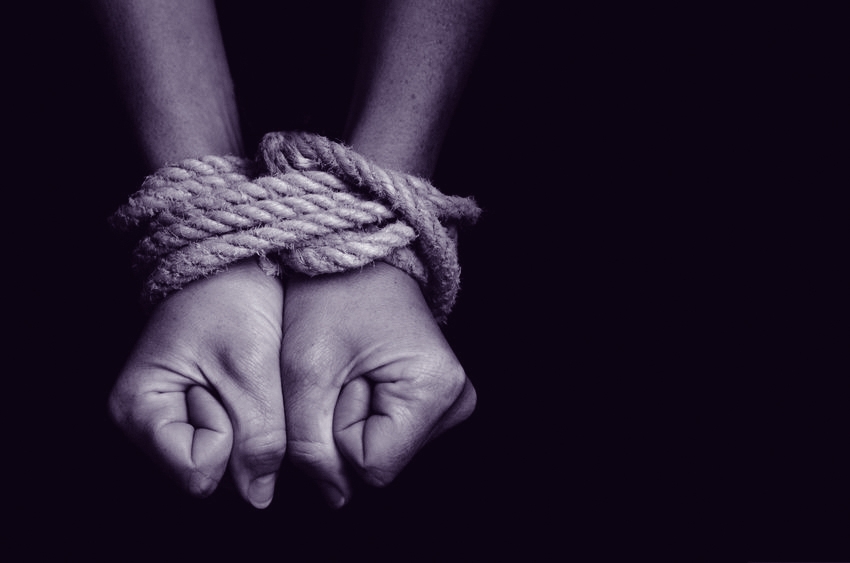Myths vs. Realities of Human Trafficking
January may have been Human Trafficking Awareness Month, but it’s an issue that has devastating effects all year long.
Due partly to its sensationalistic portrayal in the media, many think they have a clear picture of the travesty of human trafficking. Unfortunately, they’re only getting part of the story, and too often, a misrepresentation.
For instance, many believe trafficking occurs when youngsters are snatched at concerts, sporting events or stores. This urban legend is actually not as scary as the truth: It often involves teens looking for romance and are manipulated by their partner.
“…many believe trafficking occurs when youngsters are snatched at concerts, sporting events or stores. This urban legend is actually not as scary as the truth: It often involves teens looking for romance and are manipulated by their partner.”
Myths vs. Realities of Human Trafficking
January may have been Human Trafficking Awareness Month, but it’s an issue that has devastating effects all year long.
Due partly to its sensationalistic portrayal in the media, many think they have a clear picture of the travesty of human trafficking. Unfortunately, they’re only getting part of the story, and too often, a misrepresentation.
For instance, many believe trafficking occurs when youngsters are snatched at concerts, sporting events or stores. This urban legend is actually not as scary as the truth: It often involves teens looking for romance and are manipulated by their partner.
“…many believe trafficking occurs when youngsters are snatched at concerts, sporting events or stores. This urban legend is actually not as scary as the truth: It often involves teens looking for romance and are manipulated by their partner.”
Janice Podzimek, Interpersonal Violence Liaison for the Brain Injury Alliance of Arizona (BIAAZ) dispels these notions and urges a deeper understanding. “It is more insidious than you can imagine. There’s a difference between sex and labor trafficking, but the people behind both are destroying lives every day.
In a growing number of cases, there is a disastrous cycle of brain injury. Those who are trafficking find themselves in violent situations, including prostitution, incarceration, and domestic abuse. Subsequent injuries further impair their ability to escape.”
To dispel human trafficking myths, following are some of the most common fictions and the realities:
MYTH vs. REALITY
MYTH
It’s always or usually a violent crime.
REALITY
Most human traffickers use psychological means such as manipulating or threatening victims into providing commercial sex or cheap labor.
MYTH
All human trafficking involves commercial sex (exchanging money or goods for any sex act).
REALITY
Despite sex trafficking grabbing the headlines in the U.S., many believe labor trafficking is more pervasive throughout the world. However, both involve the use of force or coercion to make another person provide labor or commercial sex.
MYTH
Human trafficking only happens in illegal or underground industries.
REALITY
Cases have been reported and prosecuted in a wide range of industries, including restaurants, cleaning services, and construction. Sue Purchase, Director of Harm Reduction Sisters in Duluth, MN says, “Sex work/human trafficking thrives in black market economies but isn’t limited to illegal or underground industries.”
MYTH
Only women and girls are survivors of sex trafficking.
REALITY
According to a recent study, there are an equal number of male and female survivors of sex trafficking. LGBTQ boys and young men are particularly vulnerable.
MYTH
Human trafficking involves transporting a person across state or national borders.
REALITY
Human smuggling is often confused with human trafficking, which does not require any movement. “A person can be trafficked, pimped, or prostituted out of their own home by family members,” adds Purchase.
MYTH
If the trafficked person initially offers consent, then it cannot be considered human trafficking, because they “knew better”.
REALITY
Purchase bats down this assertion. “That is not true; trafficking is complicated, and people are frequently coerced and not in a position to agree or disagree.”
MYTH
People being trafficked are physically held against their will.
REALITY
Although this is sometimes true, it is more common for people to be in more complicated situations, like lacking necessities, transportation or fearing for their safety. What’s more, many of those who been manipulated over a long period of time may not even be aware of their predicament.
MYTH
Traffickers target strangers.
REALITY
Many survivors are trafficked by romantic partners, including spouses and family members, including parents.
“This is an overwhelming problem but shedding light on the truth is key to combating it. I just want people to know, there’s always a way out,” says Podzimek.
If you want information on the connection between human trafficking and head injury, contact Janice Podzimek at 602-508-8024.
ABOUT BRAIN INJURY ALLIANCE OF ARIZONA
The Brain Injury Alliance of Arizona (BIAAZ) is the only statewide nonprofit organization dedicated to improving the lives of adults and children with all types of brain injuries through prevention, advocacy, awareness and education. BIAAZ also houses the Arizona Brain Health Resource Center, a collection of educational information and neuro-specific resources for brain injury survivors, caregivers, family members and professionals.
What began in 1983 as a grassroots effort has grown into a strong statewide presence, providing valuable life-long resources and community support for individuals with all types of brain trauma at no charge.
The Brain Injury Alliance of Arizona:
- Works with Congressional Brain Injury Task Force
- Houses Arizona Brain Health Resource Center
- Hosts Statewide Opioid Use Disorder & Cognitive Impairment Workgroup
- Has Statewide Opioid Use Disorder & Cognitive Impairment Response team with peer support, training, and family wraparound services
- Facilitates Brain Health Advisory Council
- Manages statewide Neuro Info-Line: 888-500-9165






